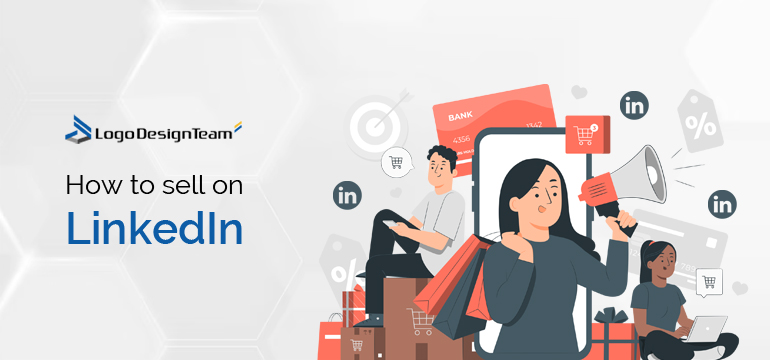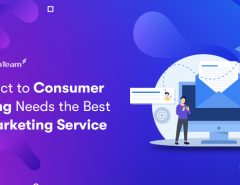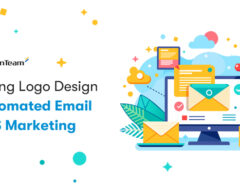LinkedIn is an effective platform for finding IT clients, but only if the sales process is set up properly.
The classic story is when a sales manager goes to LinkedIn, finds a potential client, and starts a conversation. In this case, the communication is reduced to a story about the company and the benefits of cooperation with it. The result of such actions is often zero – to get a client from LinkedIn in today’s reality, you need other approaches. How to use LinkedIn for sales people is what we’ll talk about next.
Building a funnel through Social Selling
IT sales need to understand that successful LinkedIn sale and beyond requires a strategic approach. Each tool is connected to the others in one way or another, so it’s important to pay attention to all the details:
- A prepared profile of an expert, not a regular user, with a clear value proposition. It is a good idea to begin by stating in as much detail as possible whose profile it is and how it can help. Something like this: I am the Sales Manager of Company X, and I offer so-and-so products/services for solving a specific problem. This alone will help increase your conversion rate because this is the first thing a potential client sees. It’s also important to fill out all the basic information, add articles and attachments, and don’t forget to anchor the important stuff to create an image of expertise. Cases and testimonials work well. A quality photo, cover, and other media content are desirable. In general, the account page should be made with the prospective client’s journey through the sales funnel in mind, as it is on the landing pages;
- Personalization and relevance. You need to pinpoint, or target not only leads but also the messaging for them. Look at profiles, highlight key information and write messages tailored to the interests and business concerns of potential customers. It’s important not to forget about proper positioning and presentation of the company;
- Expert content. Posting on LinkedIn is an important tool to promote your profile and communicate the value of your product/company to your target audience. Well-prepared expert content can increase not only the account’s visibility and raise its rating in the eyes of the target audience but also attract potential customers;
- Farming approach. On profile forums, you can come across the opinion that the LinkedIn outbound sales channel is cheap, fast, and effective. In practice, this is far from the case. The fact is that clients often approach the decision to cooperate with a particular IT company after a long study of information and thinking about all the risks. Therefore, the practice of “growing” your audience with the help of the same expert content shows itself well in terms of sales on LinkedIn. In the long term, this approach allows for obtaining a more stable stream of leads, which is often more profitable than the outbound channel;
- Soft connect. This is essentially a rejection of pitching and imposing a sale at the start of communication with the lead. It is better to begin by providing interesting and useful information to the client, showing your expertise, and then gradually leading him through the funnel. Such a scheme shows high effectiveness. Everyone wants a solution to their problem, not a sale.
Tips to improve sales on LinkedIn
Your content on LinkedIn is an opportunity to show expertise, increase the “area” of interaction with leads and communicate the value of the company’s product or service natively to them. For this tool to perform well, it is important to make posts regularly according to a predefined content plan. Even simple texts without photos or video additions are good at this. The main thing is that the content should be relevant. So people will relate and the content will receive real LinkedIn likes and shares.
In practice, an hour a week spent writing posts helps to create a funnel of clients on LinkedIn who come to you themselves. The content development scheme is rough as follows. First, determine what questions in the context of different pitches the leads are looking for answers. For this, you can use different tools: address book of inquiries, hashtags, trends, and help from the company’s marketers. After that, we connect the information obtained with a unique selling proposition. Then we plan 6-10 posts per month, write and publish them. Don’t forget to use the same information for outreach on LinkedIn.
LinkedIn Sales Strategy – Winning Post Sequence Structure
There are actually five things you need to do:
- Connection request: This is actually a call to someone and a connection with someone.
- Introductory message: This is not an offer, but an introductory message (sent 24-48 hours after the connection request has been accepted).
- Irresistible offer (number one, which is sent in 14-20 days).
- Irresistible offer (number two, which is sent 7-10 days after the first). We’re not talking about a sales pitch here, but a pitch to see if they have a need or a problem.
- Push message (sent after 7-10 days): Reminder messages.
After five messages, we don’t send any more messages, we leave the person alone for a few months, and then if they’re on the list for another offer, you can send them your offer from another campaign.
If you wait 14-20 days, that’s perfectly fine. This is because you want them to see your posts, which is why we talked about the importance of copywriting. Since you have a content strategy working on LinkedIn, this is what we call inbound marketing.
Connection request types
There are four approaches when it comes to a connection request:
- Polite Approach
- Curious Approach
- Direct Approach
- Flattering approach
Structure of the introductory message
The message you send 24 hours after receiving the acceptance request. The first thing you need to know is that your message should be short and sweet. Here are four things to do:
- Express gratitude. Be grateful and sociable when speaking;
- Show interest;
- Apply elevator pitch;
- Subscribe
Use cases for LinkedIn
Most often, people think of LinkedIn for lead generation. But that’s not the only time you can use this professional network, you can use LinkedIn for so much more than lead generation. You can use it for:
- Recruit people for your team.
- Make partnership deals (referral partnerships).
- Find and select investors (There are many investors on LinkedIn, and you can absolutely introduce your investment opportunity to them).
- Sell physical and digital products.
- Send out brand messages (showing them what you’re doing through your posts).
- Blog/Send out newsletters URL Campaigns.
LinkedIn Sales Strategy – About Selling on LinkedIn
You may not know, but when you are about to implement your strategy, one of the best things to do is to clean up your LinkedIn. In fact, you don’t want to have your teachers and previous colleagues (well, you can, but they won’t be part of your prospects).
You need to have a LinkedIn account where the people you add are most likely to buy things from you (and that could mean having two LinkedIn accounts: one for you and your personal branding, and the other dedicated to your business).
By the way, do you think having a lot of people who are not your target audience is a good idea? That your content will be multiplied because it will be seen in other feeds? When you post something on LinkedIn, not everyone will see or interact with your post.
What’s more, if it’s not relevant to them, they can hide your content, which is a bad sign for the LinkedIn algorithm and, as a result, a bad sign for your visibility. Thus, you are wasting your time on people who will never buy from you.
As a marketer, when you want to sell a product or service on LinkedIn, you need to clear your account. What should be on your sales account are the leads and leads that are relevant to your solution. Kuan insists on this: what you are going to post must be relevant to them.
By the way, LinkedIn is a platform based on trust. Yes! Selling on LinkedIn is much easier because you can speak directly to the solution founder or directors. You don’t have to go through all the barriers and you bypass the gatekeepers.
Sales Strategy – Important Concepts to Keep in Mind
On LinkedIn, you must remember that your sales process must cover all segments of LinkedIn. As explained earlier, on LinkedIn, your target audience includes:
- 3% are ready to buy.
- 17% collect information.
- 20% have just realized the problem.
- 60% don’t know they have a problem.
This is the larger market formula that you need to keep in mind and you must tailor your strategy accordingly. Don’t forget that you’re not only writing your post for the top three percent in your network, but for everyone in the funnel.
And great! We have nothing more to add, now you know everything about the LinkedIn sales strategy. Feel free to try it yourself.




